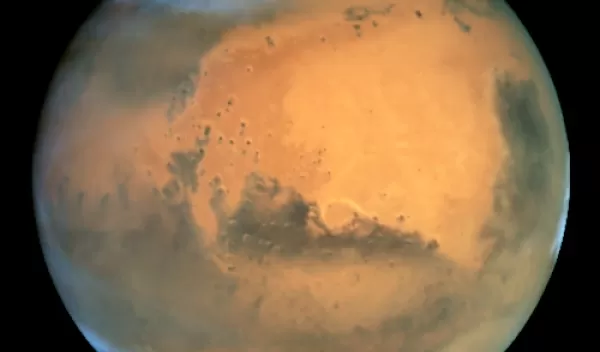
Subsurface water on Mars defies expectations
A new analysis of seismic data from the InSight mission to Mars has revealed some surprises. The first: the top 300 meters of the subsurface beneath the InSight landing site near the Martian equator contains little to no ice.
"We find that Mars' crust is weak and porous, the sediments are not well-cemented, and there's no ice or not much ice filling the pore spaces," said geophysicist Vashan Wright of the Scripps Institution of Oceanography at the University of California San Diego. Wright and co-authors published the U.S. National Science Foundation-supported analysis in Geophysical Research Letters.
The second surprise contradicts a leading idea about what happened to water on Mars. The red planet may have harbored oceans of water early in its history. Scientists suspected that much of the water became part of the minerals that make up underground cement.
"If you put water in contact with rocks, you produce a brand-new set of minerals, like clay, the water's not a liquid, it's part of the mineral structure," said study co-author Michael Manga of the University of California, Berkeley.
Water may also go into minerals that do not act as cement. But the uncemented subsurface removes one way to preserve a record of life or biological activity, Wright said. Cements by their very nature hold rocks and sediments together, protecting them from destructive erosion.
The lack of cemented sediments suggests a water scarcity in the 300 meters below InSight's landing site near the equator. The below freezing average temperature at the Mars equator means that conditions would be cold enough to freeze water if it were there.
Seismic waves from marsquakes, quakes on the surface or interior of Mars, provide clues to the nature of the materials they travel through. Possible cementing minerals — such as calcite, clay, kaolinite and gypsum — affect seismic velocities. Wright's team applied rock physics computer modeling to interpret the velocities derived from the InSight data.
"This study is an example of using geoscience knowledge to understand the environments of other worlds," said Justin Lawrence, a program director in NSF's Division of Earth Sciences. "The lessons learned may also lead to a broader and deeper understanding of Earth and its evolution."
